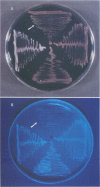Abstract
In the 1980s, a pink bacterium different from species of the genus Methylobacterium was implicated in human infection. Using biochemical tests and DNA hybridization, we examined 42 strains of pink-pigmented, gram-negative bacteria that were not members of the genus Methylobacterium. The isolates included 6 strains each of CDC "pink coccoid" groups I, II, III, and IV; 10 isolates from Gilardi's "unnamed taxon"; and 8 blood isolates from ill, debilitated, or immunosuppressed patients. The DNA hybridization studies supported the creation of six genomospecies encompassing the 42 strains. Reactions for esculin hydrolysis, glycerol oxidation, and D-mannose oxidation enabled separation of genomospecies 1 through 4. These tests, as well as motility, nitrate reduction, citrate utilization, and oxidation of L-arabinose, D-galactose, and D-xylose, differentiated genomospecies 5 and 6 from each other and from genomospecies 1 through 4. These organisms were susceptible in vitro to the aminoglycosides, tetracycline, and imipenem and generally susceptible to the quinolones. We propose the new genus, Roseomonas, for these bacteria to include three named species, Roseomonas gilardii sp. nov., Roseomonas cervicalis sp. nov., and Roseomonas fauriae sp. nov., and three unnamed genomospecies.
Full text
PDF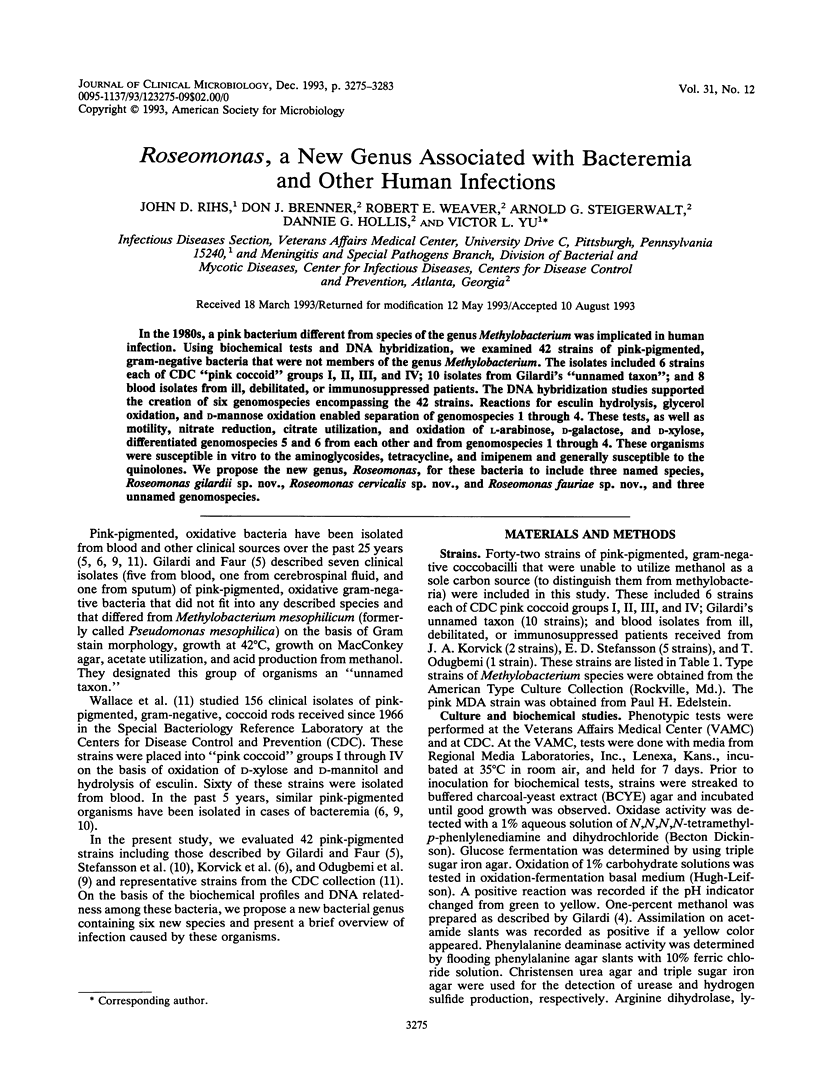
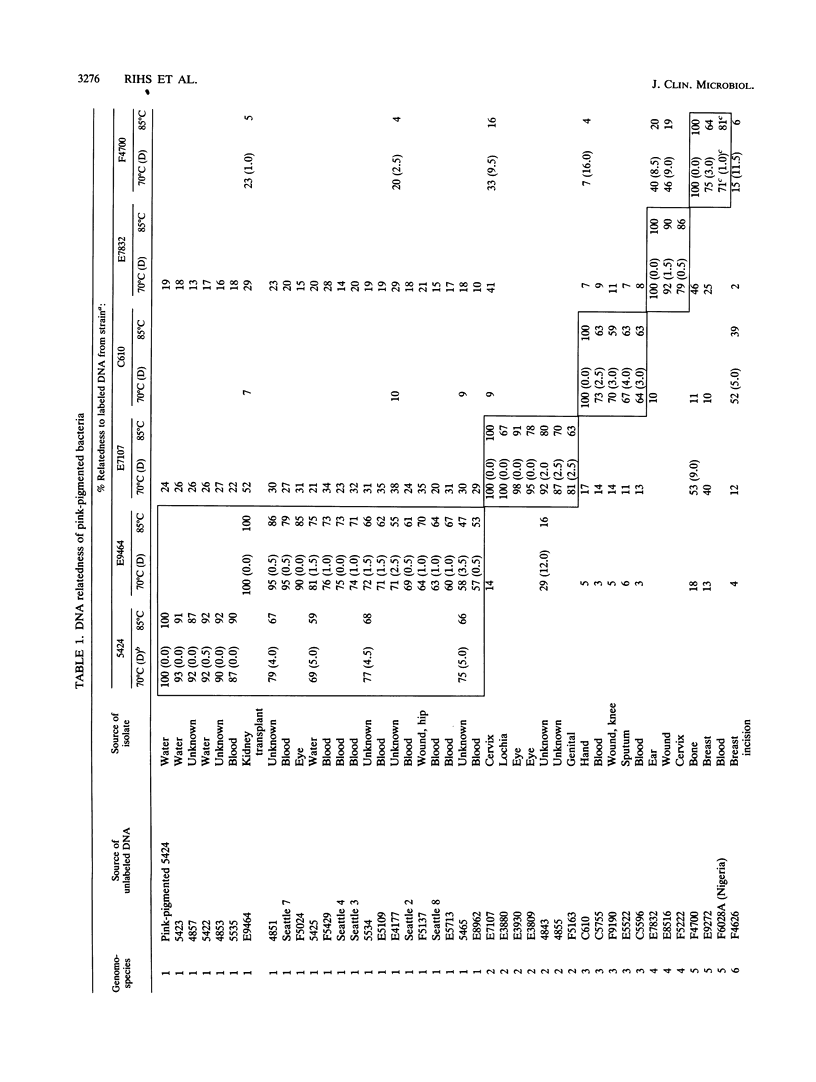
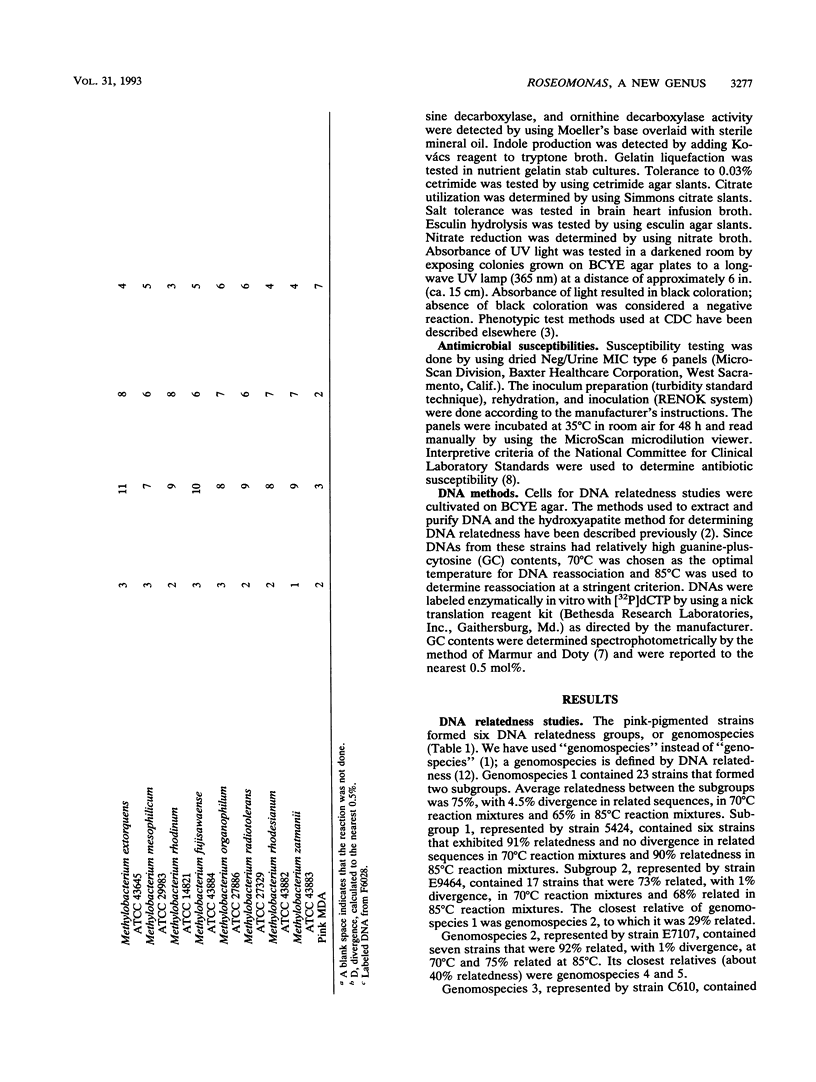
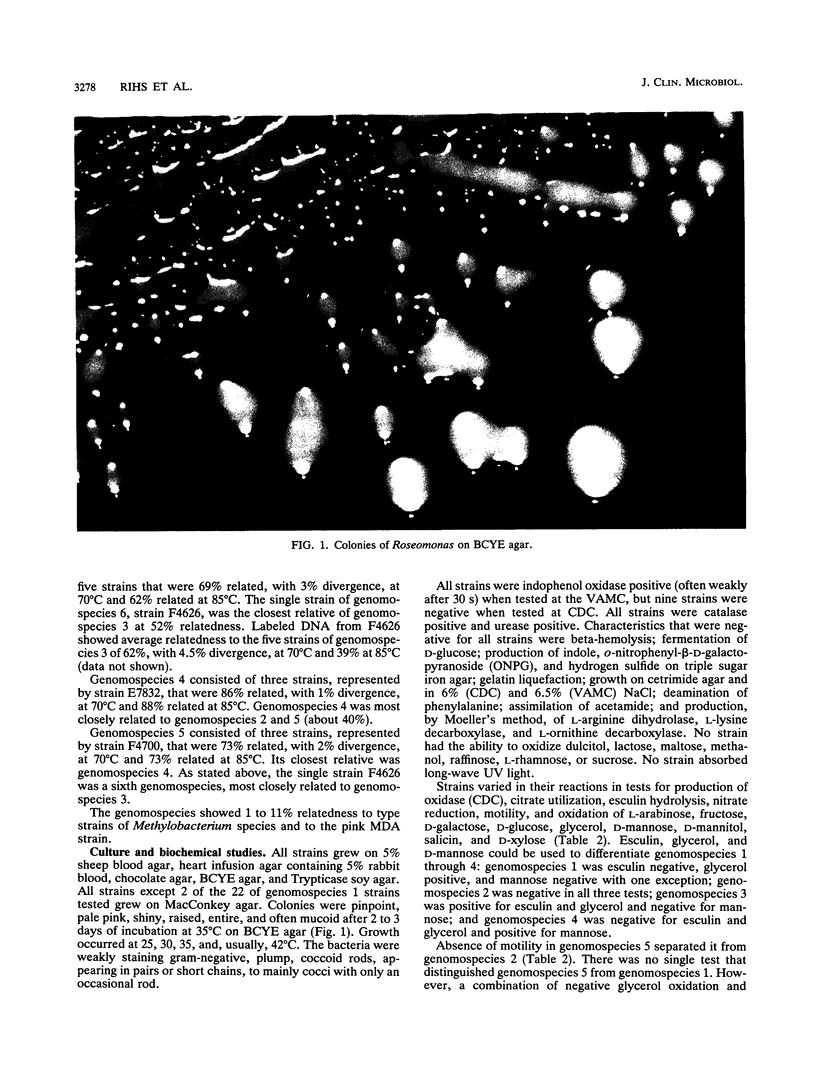
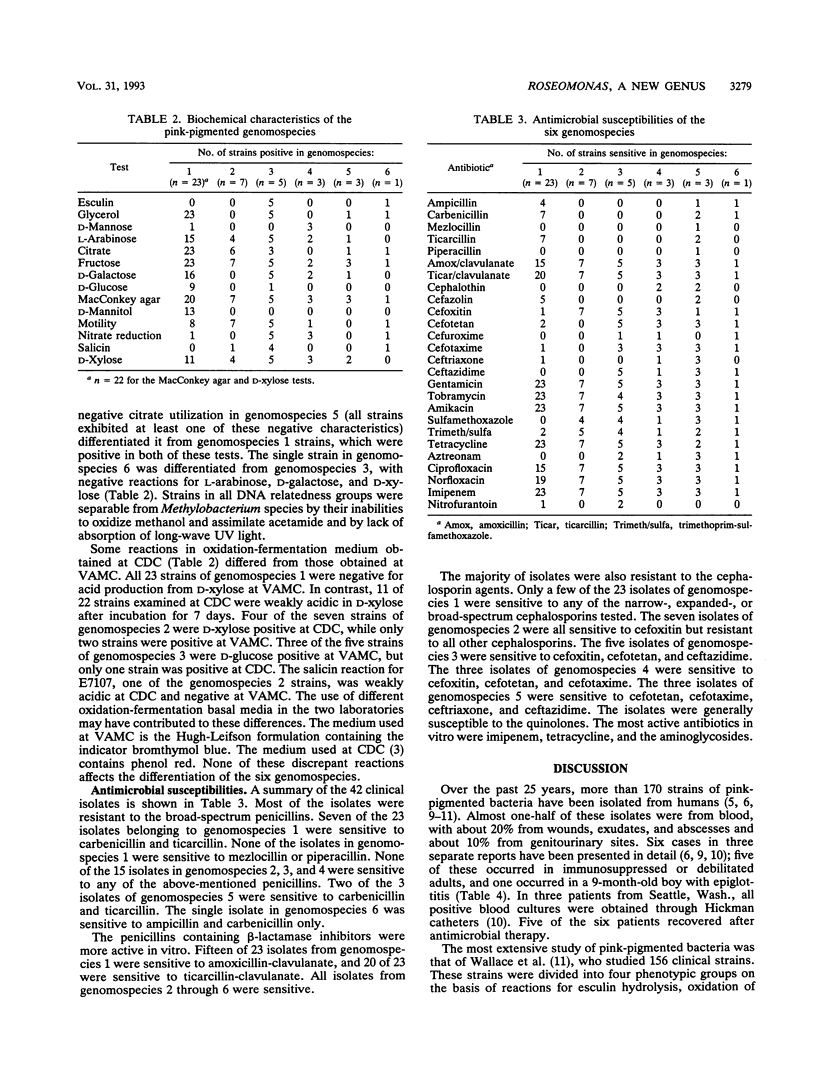

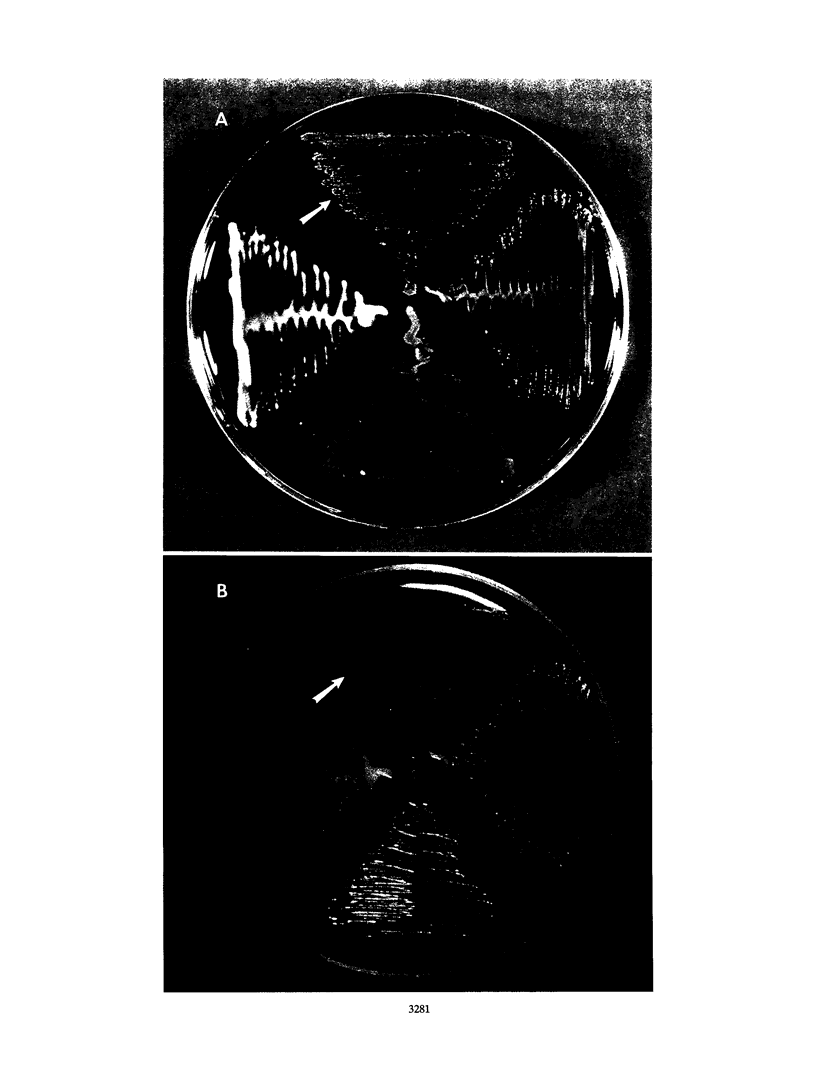

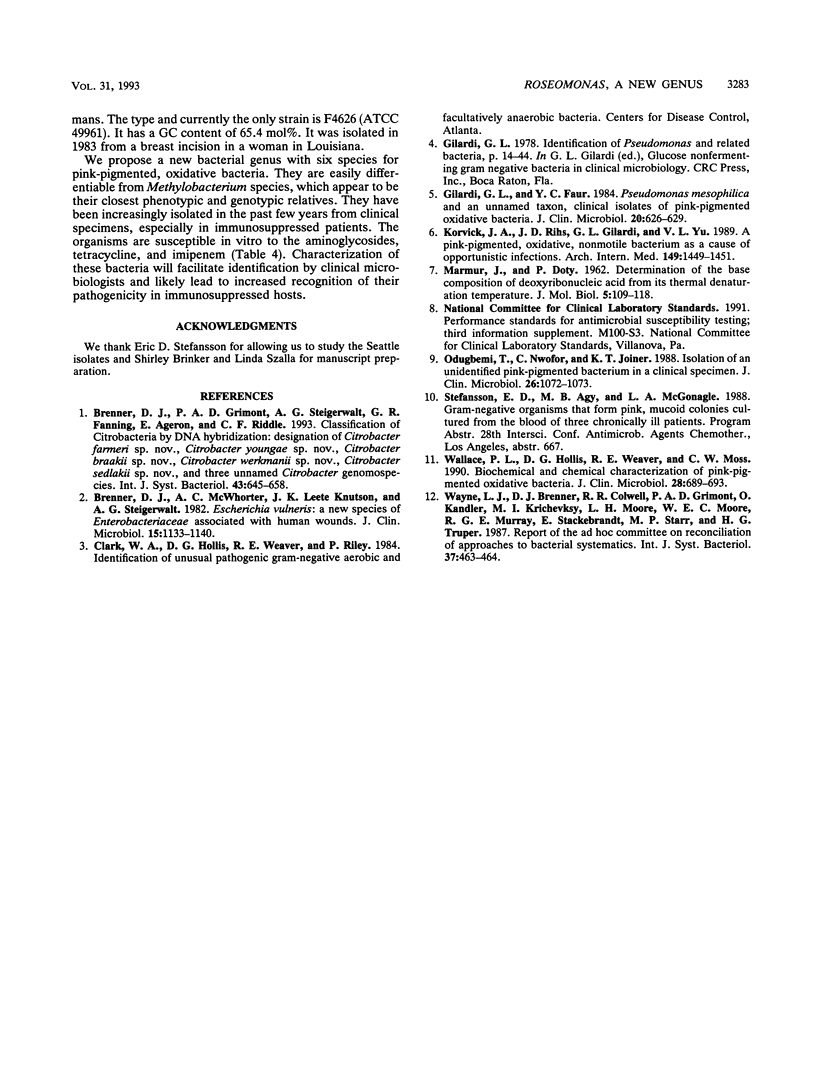
Images in this article
Selected References
These references are in PubMed. This may not be the complete list of references from this article.
- Brenner D. J., Grimont P. A., Steigerwalt A. G., Fanning G. R., Ageron E., Riddle C. F. Classification of citrobacteria by DNA hybridization: designation of Citrobacter farmeri sp. nov., Citrobacter youngae sp. nov., Citrobacter braakii sp. nov., Citrobacter werkmanii sp. nov., Citrobacter sedlakii sp. nov., and three unnamed Citrobacter genomospecies. Int J Syst Bacteriol. 1993 Oct;43(4):645–658. doi: 10.1099/00207713-43-4-645. [DOI] [PubMed] [Google Scholar]
- Brenner D. J., McWhorter A. C., Knutson J. K., Steigerwalt A. G. Escherichia vulneris: a new species of Enterobacteriaceae associated with human wounds. J Clin Microbiol. 1982 Jun;15(6):1133–1140. doi: 10.1128/jcm.15.6.1133-1140.1982. [DOI] [PMC free article] [PubMed] [Google Scholar]
- Gilardi G. L., Faur Y. C. Pseudomonas mesophilica and an unnamed taxon, clinical isolates of pink-pigmented oxidative bacteria. J Clin Microbiol. 1984 Oct;20(4):626–629. doi: 10.1128/jcm.20.4.626-629.1984. [DOI] [PMC free article] [PubMed] [Google Scholar]
- Korvick J. A., Rihs J. D., Gilardi G. L., Yu V. L. A pink-pigmented, oxidative, nonmotile bacterium as a cause of opportunistic infections. Arch Intern Med. 1989 Jun;149(6):1449–1451. [PubMed] [Google Scholar]
- MARMUR J., DOTY P. Determination of the base composition of deoxyribonucleic acid from its thermal denaturation temperature. J Mol Biol. 1962 Jul;5:109–118. doi: 10.1016/s0022-2836(62)80066-7. [DOI] [PubMed] [Google Scholar]
- Odugbemi T., Nwofor C., Joiner K. T. Isolation of an unidentified pink-pigmented bacterium in a clinical specimen. J Clin Microbiol. 1988 May;26(5):1072–1073. doi: 10.1128/jcm.26.5.1072-1073.1988. [DOI] [PMC free article] [PubMed] [Google Scholar]
- Wallace P. L., Hollis D. G., Weaver R. E., Moss C. W. Biochemical and chemical characterization of pink-pigmented oxidative bacteria. J Clin Microbiol. 1990 Apr;28(4):689–693. doi: 10.1128/jcm.28.4.689-693.1990. [DOI] [PMC free article] [PubMed] [Google Scholar]




